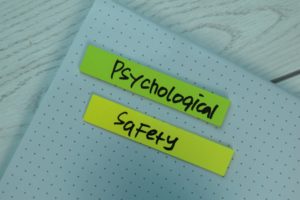
The Problem with Problem-Solving Leaders
Many employees long for leaders who can solve workplace problems—from flawed systems and procedures to inconsistent policies and managers. They want their leaders to see

Many employees long for leaders who can solve workplace problems—from flawed systems and procedures to inconsistent policies and managers. They want their leaders to see

The Situation: The “Great Global Work-From-Home Experiment” created by the COVID-19 pandemic has changed how we work and expect to work far into the future.

Imagine a workplace where people are scared to voice their opinions, where the fear of failure is so intense it paralyzes action. Such a work

The world of quantum physics with its electrons, quarks, and uncertainty principles may seem far removed from the art of leadership. However, the quantum world

Picture a garden overrun with weeds, stifling the growth of any plant trying to break through. This is the manifestation of a toxic organizational culture.

Let’s embark on an intellectual voyage where the topic of discussion isn’t how you lead a team, a department, or an organization, but rather how

For many, the pinnacle of leadership—C-suites, executive boards, or entrepreneurship—appears as a luminous summit, an apex where vision becomes reality. However, what is rarely mentioned

In the realm of productivity, procrastination is often depicted as a fire-breathing dragon. It’s easy for leaders to find themselves trapped in its lair of

An organization’s health is only as sound as its leader’s decisions. Some companies prosper from wise leadership directions, while others struggle after flawed choices—choices that

How a leader responds to adversity reveals how effective that leader truly is. Reactions to setbacks or crises not only test leadership character but define

Business is an active, demanding endeavor. Only those who consistently apply themselves succeed. Organizations that thrive require leaders who actively dream, plan, engage, solve, pursue,

Surveys and studies indicate global job dissatisfaction is at a two-decade high. Disengaged employees account for nearly 70 percent of the workforce, which significantly affects







